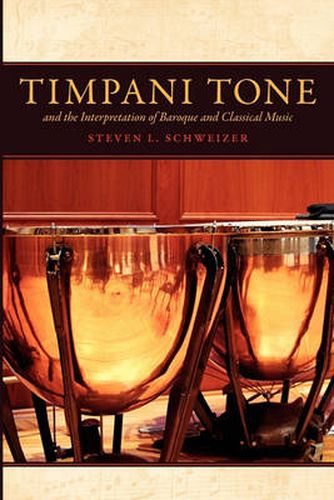Timpani Tone and the Interpretation of Baroque and Classical Music
Steven Schweizer (Principal Timpanist, Principal Timpanist, Florence Symphony Orchestra)

Timpani Tone and the Interpretation of Baroque and Classical Music
Steven Schweizer (Principal Timpanist, Principal Timpanist, Florence Symphony Orchestra)
Timpani Tone and the Interpretation of Baroque and Classical Music explores the nature, production, and evolution of timpani tone and provides insights into how to interpret the music of J. S. Bach, Handel, Haydn, and Mozart. In drawing on 31 years of experience, Steven L. Schweizer focuses on the components of timpani tone and methods for producing it. In so doing, he discusses the importance of timpani bowl type; mallets; playing style; physical gestures; choice of drums; mallet grip; legato, marcato, and staccato strokes; playing different parts of the timpano head; and psychological openness to the music in effectively shaping and coloring timpani parts. In an acclaimed chapter on interpretation, Schweizer explores how timpanists can use knowledge of the composer’s style, psychology, and musical intentions; phrasing and articulation; the musical score; and a conductor’s gestures to effectively and convincingly play a part with emotional dynamism and power. The greater part of the book is devoted to the interpretation of Baroque and Classical orchestral and choral music. Meticulously drawing on original sources and authoritative scores from the seventeenth through nineteenth centuries, Schweizer convincingly demonstrates that timpanists were capable of producing a broader range of timpani tone earlier than is normally supposed. The increase in timpani size, covered timpani mallets, and thinner timpani heads increased the quality of timpani tone; therefore, today’s timpanist’s need not be entirely concerned with playing with very articulate sticks. In exhaustive sections on Bach, Handel, Haydn, and Mozart, Schweizer takes the reader on an odyssey through the interpretation of their symphonic and choral music. Relying on Baroque and Classical performance practices, timpani notation, the composer’s musical style, and definitive scores, he interprets timpani parts from major works of these composers. Schweizer pays particular attention to timpani tone, articulation, phrasing, and dynamic contouring: elements necessary to effectively communicate their part to listeners.
This item is not currently in-stock. It can be ordered online and is expected to ship in 7-14 days
Our stock data is updated periodically, and availability may change throughout the day for in-demand items. Please call the relevant shop for the most current stock information. Prices are subject to change without notice.
Sign in or become a Readings Member to add this title to a wishlist.


